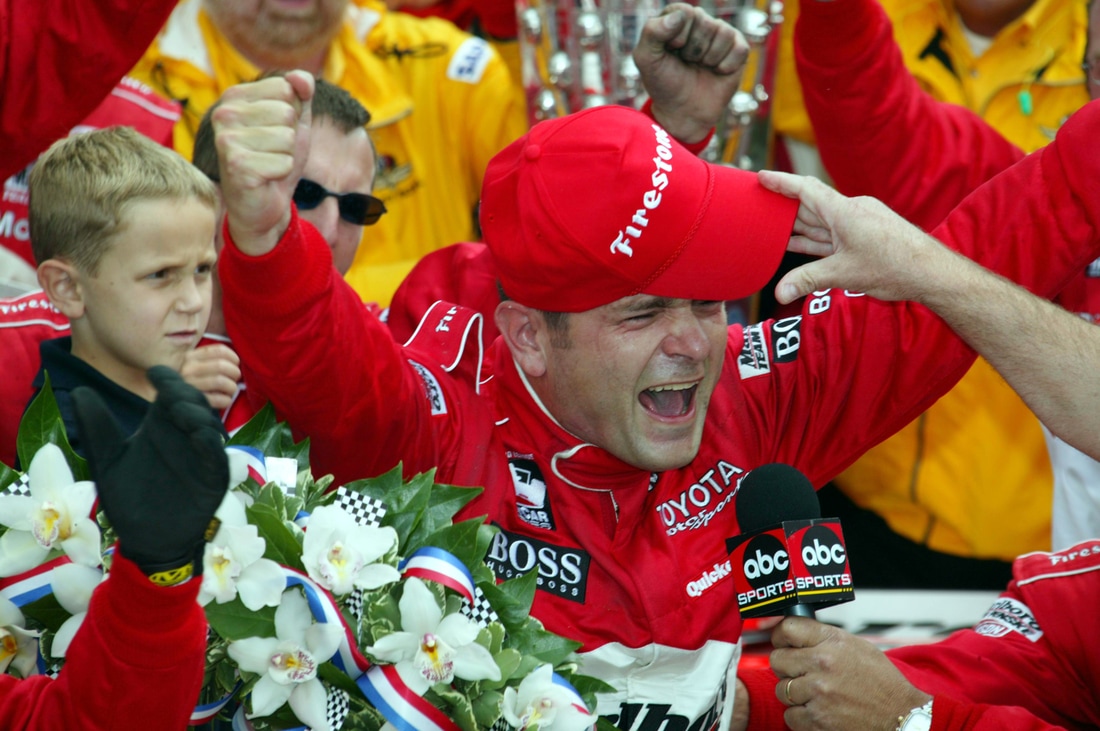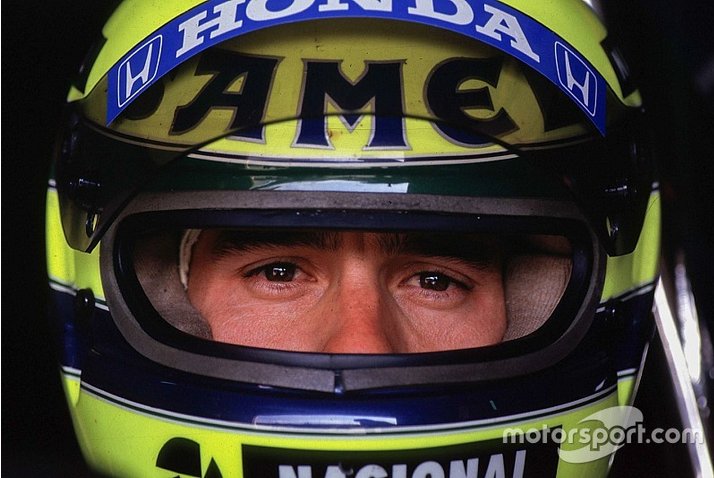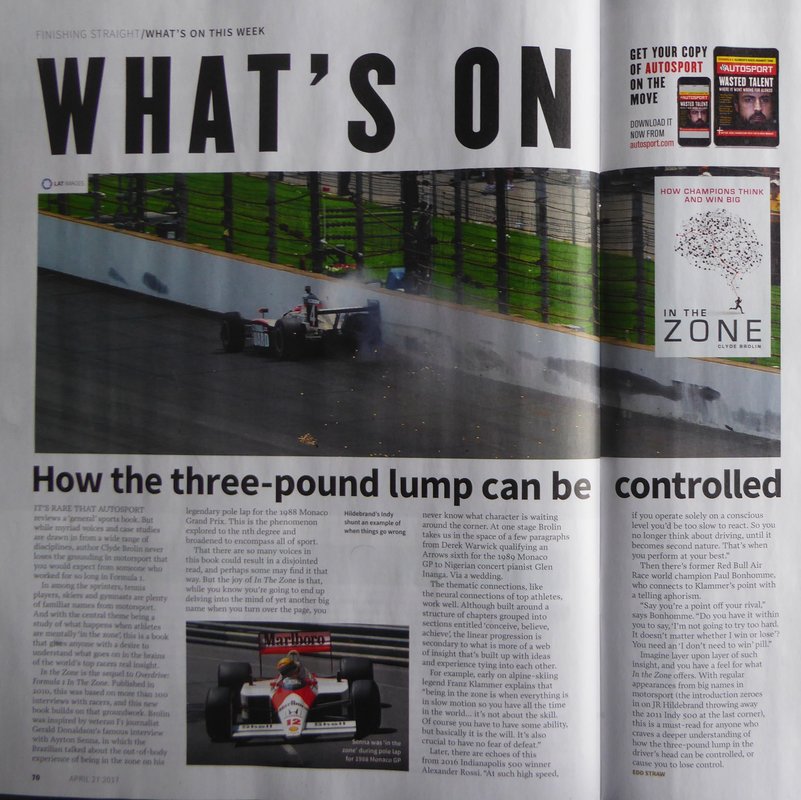|
When Takuma Sato took the chequered flag to win the 2017 Indianapolis 500, he became the first driver from an Asian country to win the Borg-Warner trophy. In doing so, he sent the whole of motorsport-mad Japan into raptures.
Sato is also the first 40-year-old for two decades to taste the famous Indianapolis bottle of milk. Yet, like so many of his predecessors it was not the first time he had seen the image in his head. 'I dreamed of something like this since I was 12,' the Japanese racer admitted yesterday. 'You don't just dream about it. Obviously, you prepare for the race. You want to win the race. I had huge ambition and I had to try. I do feel after 2012 I really needed to correct something I left over. 'I knew I could do it. But it was just about waiting for the moment. When the moment comes, I had to give 100% commitment. The last few laps, they were the moment... I just had to believe myself and the car. It came off beautifully. ' The result was indeed redemption after his last-lap crash while battling for the lead with Dario Franchitti five years earlier. But Sato's whole career makes for remarkable reading given how late he began his motor racing life. In an era when most of his contemporaries were filling up their subconscious minds before their age reached double figures, Sato gave them all a decade's head start. He finally caught up yesterday, 20 years later... proof positive that it's never too late to dream big. 'I didn't have opportunity when I was kid,' he smiled. 'I always loved motorsport but I didn't start racing until I was 20. I know it's very late, but I just never gave up. That's maybe why I failed so many times, too. But I made a mistake, learned from it, then tried to get faster and better. 'Age is clearly important for any athlete. Now I'm 40 you have to consider how you're going to perform well and we train really hard. But it's always just heart and the mental strength. You can keep on going...'
0 Comments
Still time for Lewis Hamilton to regain that magic Monaco rhythm… and match his idol Ayrton Senna26/5/2017  The Monaco Grand Prix is all about rhythm. Nailing an immaculate lap in Saturday’s crucial qualifying session requires a smooth build-up from the very first practice laps. That’s just what Ferrari's Sebastian Vettel has managed so far this week, even setting the fastest ever lap around the principality. By contrast Lewis Hamilton’s tough Thursday leaves him firmly on the back tyre with just FP3 left to turn things around. So a long Friday of number-crunching awaits the Mercedes engineers, with plenty at stake. As if hunting down his scarlet-clad rival wasn’t incentive enough, Lewis has the extra carrot of potentially matching his idol Ayrton Senna’s total of 65 pole positions – at the track where the Brazilian maestro had his finest hour of qualifying in 1988. Yet Hamilton has come a long way from the very first time I asked him about Senna’s Monaco masterpiece and his own peak performances for Overdrive – during testing before his first grand prix in 2007… ‘Getting in the Zone is all about controlling your mental state,’ he told me. ‘You have to be so focused and you have to have all positive energy, nothing negative. But even the athletes who say they’re in the Zone can still improve. At the moment I am strong in races but I could improve my qualifying. I’ve never had a lap where I’ve felt 100 percent perfect and I’m not even sure it is possible. But that’s what your aim is. ‘Ayrton Senna was fantastic in all areas but he was renowned for being amazing in qualifying. Maybe his lap at Monaco was 100 percent perfect but it’s not being in the Zone that makes you qualify like he did that time. That was something else, “beyond the Zone.” That’s heaven…’ Fast forward ten years – and 64 pole positions – and Hamilton has edged closer to this sporting nirvana. When I spoke to him for In The Zone, he smiled: ‘Over the years I’ve had some incredible experiences. I don’t know what Ayrton went through when he was on the edge but I’ve been on as much of the edge as I can be – and over and beyond. One of those edge moments is when you hit the wall, one is when you put an incredible lap all together. That’s what keeps me going. ‘There have been moments, particularly in Monaco, where it does almost feel like an out-of-body experience. You can’t believe you’re driving where Ayrton and the greats of the past have driven. It’s mind-blowing how you are able to keep that car out of the barriers at the speeds you’re doing.’ Make no mistake, Hamilton fans… Even if it may take a truly mind-blowing lap to pull it off this time, it can still be done - if Lewis and his team can find the rhythm back in time to get that Mercedes dancing in the streets again.  Gil de Ferran talks Fernando Alonso through the finer details of racing at Indianapolis (Photo by Chris Owens) Gil de Ferran talks Fernando Alonso through the finer details of racing at Indianapolis (Photo by Chris Owens) Fernando Alonso’s Indianapolis 500 adventure began because he wanted to show he can still race at the front. So far, so good: the Spaniard hasn’t put a foot wrong and he starts Sunday’s race from a fine fifth place on the grid. But he already owes much to the man guiding him through the intricacies of oval racing this month. Brazil’s Gil de Ferran won the Indy 500 in 2003 and, like Alonso, he regularly found the ultimate ‘peak’ of performance that marks out the greats of any sport. Yet he only stumbled into it the first time – during a bout of red mist on the Brazilian street circuit of Florianopolis when he was still racing Formula Fords. ‘I was fortunate that early in my career I accidentally reached a level of performance that seemed illogical to me,’ de Ferran told me as I researched In The Zone. ‘I went off during the race and I bent the car. Under normal circumstances when the pit crew says “go back out” you drive half a lap then say, “God I can’t even drive this thing.” But I was repeating the same lap times – and even going quicker than before the accident. ‘I later analysed the race as always, thinking about what I did right and wrong. But that really confused me. In that situation, which was frankly complete rage, how come I could perform at that level? Whatever triggered it, it wasn’t logical. I’d studied to be an engineer so I always knew two plus two equals four. It can’t equal five. So that didn’t make any sense. There was something irrational about what went on and I realised there was some other place out there.’ The place de Ferran found is the sporting nirvana called ‘the Zone’. But for most sports stars anger is a far from ideal Sat Nav for locating it: rile them up and they fall apart. That’s why sports psychology is usually aimed at inducing states of calm under pressure through techniques like visualisation and meditation. But there are exceptions, not least sailing great Ben Ainslie, who rival teams really shouldn’t consider angering as the 2017 America’s Cup starts on Friday. Gerhard Berger provided another rare exception in Overdrive with his 1997 European GP win just days after his father’s death, during a breakdown in contract negotiations with his team. He duly announced he was quitting Formula 1 before romping to pole, win and fastest lap. There is one crucial benefit to giving up all hope. When you think things can’t get any worse you dump all expectations, get out there and do your stuff. In de Ferran’s case his ‘rage’ also led him back to the pure natural ability he had in bucketloads – and he later sought to rekindle the sensation. ‘Knowing this exists was an important step, but getting there is a completely different challenge,’ he adds. ‘It depended on your emotional state of mind and your ability to Zone everything out. At the time IndyCar races were very strategic, not only about pure pace. So I had to be careful about flying off into another level. At the start of my IndyCar career that was an issue. I pushed too hard and crashed too much. But I kept working and working and working to be able to reach it more often than not. ‘I was good at doing it for qualifying - and particularly on street circuits I’ve had situations I can’t explain. You think “this is it” but there was always more and more and more. I took pride in my feedback about how the car was handling. Usually I was incisive and precise: “I want more front wing.” That’s it. But at times like that I just said: “Put the tyres on and let me go.” I’d come back with only the vaguest recollection. It usually coincided with my best runs.’ Fernando Alonso is no stranger to this racing bliss either, once telling me that this sensation feels like you're driving in a Scalextric. Moreover he rates it better than winning a race, or even winning a championship. Yet victories are often the inevitable result of a trip to the Zone anyway; if the Spaniard can find this special mental state this weekend he has a genuine chance of tasting the famous Indy 500 winner’s bottle of milk. Too much to ask at his very first oval race? Not if you ask his coach… ‘It’s pretty cool when you get there but different sportsmen reach the same level and it’s not just limited to sports,’ smiles de Ferran. ‘I truly believe the human being has a level above what people normally reach, and that you can operate at a whole different level at whatever you want. It even applies on an intellectual level. In my view the mind is elastic. There are absolutely no limits.’ The first online reviews of In The Zone have now appeared, so thank you very much to motorsport.com and LoveTennisBlog.com.
‘In The Zone is a fascinating read for anyone interested in the psychological principles behind a Who’s Who of great athletes, from Novak Djokovic to Nadia Comaneci to Usain Bolt to Michael Phelps. But the conclusion is that anyone can attain the Zone... as long as we dare to dream big.’ Read more at motorsport.com ‘In this fascinating read, Clyde Brolin reminds us just how powerful our mind is. The descriptions of being in the Zone are almost spiritual and Brolin uncovers fantastic nuggets of advice for those who “dare to dream”. This book is hard to put down…’ Read more at LoveTennisBlog.com  On what would have been New Zealand rugby legend Jonah Lomu's 42nd birthday, I wanted to share a quick snapshot of this much-missed sporting giant. During the All Blacks rugby tour of Britain in 2002, Lomu was the only star name who came on the trip. And what pressure he was under. Not only was he already suffering with his kidney illness, coach John Mitchell said it was long overdue that he started to show some form. Did Lomu let the heat get to him? Well, when New Zealand prepared for their test with England at Richmond rugby ground a few days before the game, it had been pre-publicised and the stands were packed with screaming schoolkids. After a full training session, the players were wheeled out for an autograph session. Lomu, being the undoubted star, was swamped. I'd read that Lomu had always said he was happy to sign autographs, as he wanted to give something back for all he had, so I decided to follow him and just watch. Lomu stayed, and stayed, and stayed. He was out there for a full hour, in which time I estimate he must have signed his name close to a thousand times. All of it with a smile on his face. An announcement came over the tannoy, saying the session was over, as the players had to move on. Most stars would take that as a gilt-edged chance to evacuate the scene. But not Lomu. He sped up. He kept signing, and signing, edging his way back towards the now pitch-dark players' tunnel. Even as the doors closed around him, the requests kept coming, and he did not let anyone down. He appeared out of the other side of the clubhouse for the five-yard journey to the team bus, and there was another gauntlet of shirts, programmes and balls to run. All his team-mates were sitting waiting for him on the steadily overheating bus, but they must have been used to it. Lomu just kept at it. No wonder his arms were so bloody big. Finally on the bus, he slumped down into his seat at the back, exhausted. But he kept waving until the bus was out of sight, and even managed to raise a smile when a couple of kids jumped up and smacked the window his head was leaning on - millimetres from his ear - as the bus finally made it onto the A316. Now you may think this is par for the course. You're famous, deal with it. But I've watched a lot of big names sign autographs. If there's a small group, they normally get through them. But there comes a point where the number of people lining up, shoving photographs in your face becomes way too much. At that point it's normally a question of dealing with a handful of the nearest ones, then it's 'adios'. At one point during the melee, I asked Lomu where his patience came from. He thought for a while, and replied, "Mum". It takes a big guy to give an answer like that in front of a crowd. But then Lomu was always one of the best examples world sport has of a superhuman - a giant in every sense. In The Zone features insights on the All Blacks' dominance from Lomu's fellow legends Sean Fitzpatrick and Richie McCaw plus current head coach Steve Hansen.  It was a pleasure to chat to sports book expert Matt Williams, who also appears every night on BBC Radio 2's Drivetime show alongside Simon Mayo. In this Sports Book Podcast we touched on Ayrton Senna, Felix Baumgartner, Edwin Moses, Ben Ainslie, Walter Röhrl, cavemen (!), Zen archery and more... Listen in at any of the links below: www.blubrry.com www.mixcloud.com www.stitcher.com itunes.apple.com How the three-pound lump can be controlled (by Edd Straw, Editor-in-Chief Autosport magazine)
It’s rare that Autosport reviews a ‘general’ sports book. But while myriad voices and case studies are drawn in from a wide range of disciplines, author Clyde Brolin never loses the grounding in motorsport that you would expect from someone who worked for so long in Formula 1. In among the sprinters, tennis players, skiers and gymnasts are plenty of familiar names from motorsport. And with the central theme being a study of what happens when athletes are mentally ‘in the zone’, this is a book that gives anyone with a desire to understand what goes on in the brains of the world’s top racers real insight. In The Zone is the sequel to Overdrive: Formula 1 in the Zone. Published in 2010, this was based on more than 100 interviews with racers, and this new book builds on that groundwork. Brolin was inspired by veteran F1 journalist Gerald Donaldson’s famous interview with Ayrton Senna, in which the Brazilian talked about the out-of-body experience of being in the zone on his legendary pole lap for the 1988 Monaco Grand Prix. This is the phenomenon explored to the nth degree and broadened to encompass all of sport. That there are so many voices in this book could result in a disjointed read, and perhaps some may find it that way. But the joy of In The Zone is that, while you know you’re going to end up delving into the mind of yet another big name when you turn over the page, you never know what character is waiting around the corner. At one stage Brolin takes us in the space of a few paragraphs from Derek Warwick qualifying an Arrows sixth for the 1989 Monaco Grand Prix to Nigeria-born concert pianist Glen Inanga. Via a wedding. The thematic connections, like the neural connections of top athletes, work well. Although built around a structure of chapters grouped into sections entitled ‘conceive, believe, achieve’, the linear progression is secondary to what is more of a web of insight that’s built up with ideas and experience tying into each other. For example, early on alpine-skiing legend Franz Klammer explains that “being in the zone is when everything is in slow motion so you have all the time in the world… it’s not about the skill. Of course you have to have some ability, but basically it is the will. It’s also crucial to have no fear of defeat.” Later, there are echoes of this from 2016 Indianapolis 500 winner Alexander Rossi. “At such high speed, if you operate solely on a conscious level you’d be too slow to react. So you no longer think about driving, until it becomes second nature. That’s when you perform at your best.” Then there’s Red Bull Air Race world champion Paul Bonhomme, who connects to Klammer’s point with a telling aphorism. “Say you’re a point off your rival,” says Bonhomme. “Do you have it within you to say, ‘I’m not going to try too hard. It doesn’t matter whether I win or lose?’ You need an ‘I don’t need to win’ pill.” Imagine layer upon layer of such insight, and you have a feel for what In The Zone offers. With regular appearances from big names in motorsport (the introduction zeroes in on JR Hildebrand throwing away the 2011 Indy 500 at the last corner), this is a must-read for anyone who craves a deeper understanding of how the three-pound lump in the driver’s head can be controlled, or cause you to lose control. |
AuthorClyde Brolin spent over a decade working in F1 before moving on to the wider world of sport - all in a bid to discover the untapped power of the human mind. Archives
October 2024
Categories
All
|










 RSS Feed
RSS Feed

